Afghans or Us: Who Are the Refugees?
Jared Taylor, American Renaissance, October 7, 2021
Whites better keep moving.
This video is available on BitChute, Brighteon, Odysee, Rumble, Gab TV, 3Speak, and UGETube.
How many Afghans are coming – after the regime we supported for 20 years collapsed in 11 days? We seem to have flown out about 70,000 in those final crazy days, but where are they now?
Just last Monday there was a cheerful New York Times article about 12,600 of them living at Fort McCoy Army Base in Wisconsin. The Times says 40,000 more are at other bases around the country, and another 14,000 are on overseas US bases, waiting to come.
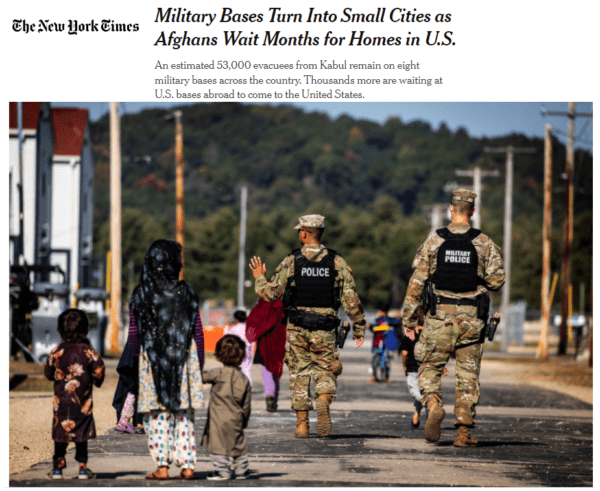
At Fort McCoy, the Times notes there have been outbreaks measles, mumps, rubella, polio, and about 140 cases of Covid. Men from different tribes get into fights, and there have been sexual assaults – but that’s what you expect from Afghans. A former member of the national ladies’ Paralympic basketball team is at Fort McCoy, in her wheelchair.
About half of these Afghans, says the Times, know some English, which means the rest can’t speak a word. These people are obviously not the plucky interpreters and translators who helped us spread democracy and women’s rights. Who are they?
But first, let’s talk about those interpreters and translators. They are supposed get in on Special Immigrant Visas, or SIVs. That is a special kind of visa cooked up just for Afghans, who are in danger because they worked for us. But SIVs were invented in 2009. We were dispensing the American way of life at fever pitch, but we already knew – 11 years ago – that people who worked for us would have to bugger off?

I guess so, since we had issued more than 16,000 of those visas and there were another 18,000 in the works when Kabul collapsed.
This article about Special Immigrant Visas explains the process.
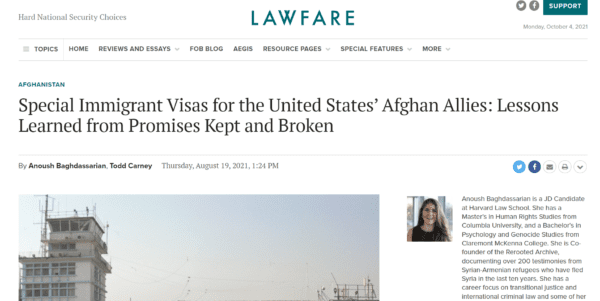
It notes that it took an average of two years to grant an SIV. Why? A big reason was “the need to conduct rigorous and lengthy background checks.” You couldn’t trust Afghans even if they worked for us.
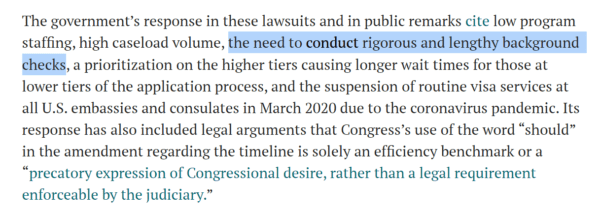
Obviously, the 70,000 Afghans, half of whom don’t speak a lick of English, along with the Paralympic basketball player, don’t have interpreter visas. So what’s their status? If you think they’re refugees or asylum seekers, you’re wrong. You don’t know half the ways to get into this country. Heck, *I* don’t know half the ways.
As this article explains, they’re coming in under what’s called Humanitarian Parole.
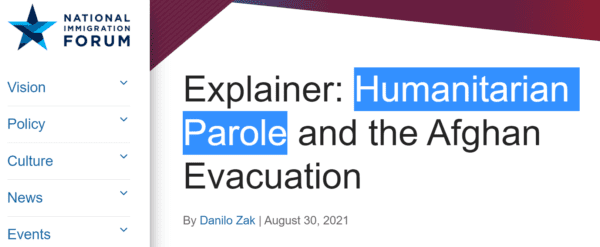
That’s for when we want to get people here in a panic. As the article says, “While visa processes can take years or decades, the parole process may take days or even just hours to complete.”
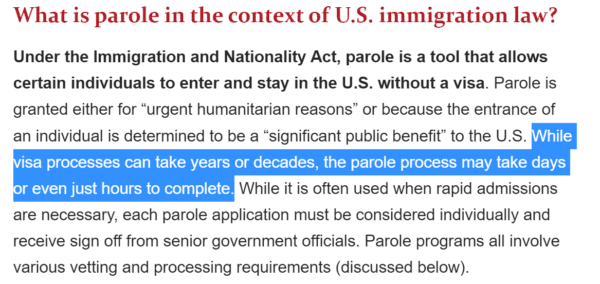
I bet with Kabul going to pieces, it took just minutes to wave each Afghan on board those planes.
Instead of taking a nice, long look at them, we flew them right out, along with their measles, mumps, and polio. And, believe it or not, there is no legal definition of who gets humanitarian parole. That means the Biden folks made it up as they went along. Once parolees get here, they have two years to decide what to do.
Still, we are supposed to feel very sorry for the thousands left behind. The administration says they should go to a neighboring country and apply from there.
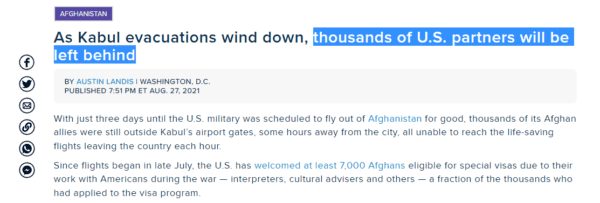
That won’t be easy. Pakistan, where Afghans usually run away to, has closed its border and just finished 1,640 miles of double fencing, 12 feet tall, with six feet of concertina barbed wire in between. Iran and Turkey have closed their borders and stepped up patrols. What do those countries know that we don’t?
So what happens with Afghans on parole? After they have been cured of mumps and covid, they will be turned loose. Thirty-seven states have said they will take some, but two states – South Dakota and Wyoming– said no way. Eleven states are undecided. Last week, Congress set aside $6.3 billion to ease the pain of relocation.
I was surprised to learn that during the 20 years we were bringing Coca Cola and McDonalds to Afghanistan, we had already brought in more than 97,000 Afghans.

Here is a graph that shows when they came.
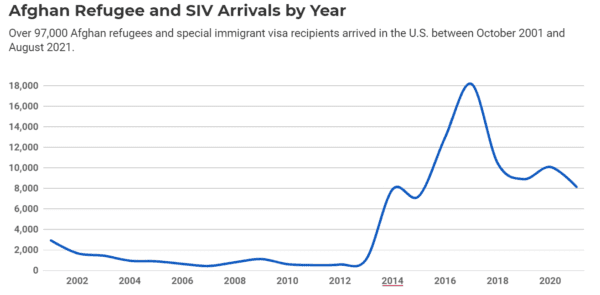
2014 is when the SIV holders really began to pour in. Again: Why did these guys have to run for their lives while nation-building was in full swing? In any case, with nearly 100,000 Afghans already here, you’ll hardly notice another 70,000.
Unless you live in Alaska, Hawaii, and Wyoming. During those 20 years, these three states refused to take in even one Afghan.
Most of this new batch will apply for asylum. They can do that because in 1968, we signed a treaty that says we are supposed to let in anyone with, and I quote, “a well-founded fear of being persecuted for reasons of race, religion, nationality, membership of a particular social group or political opinion.” If foreigners apply from outside the US, they are refugees. If they apply from inside, like these Afghans, they are asylum seekers.
What are their prospects? Excellent. Even if they turn out to be pederasts or bomb-throwers or bigamists or experts in female genital mutilation, we won’t send them back to a country we wrecked, and no other country will want them. Consider them home free.

Credit Image: © Oliver Weiken/dpa via ZUMA Press
Along with a lot of other people who get asylum. Here is a question for you. Which country gets the most people approved for asylum? You get a gold star if you know that it’s – China. As you can see on this graph, since Xi Jinping took over in 2012, the number of Chinese who want to clear out has taken off. Guess where they want to go? In 2020, 70 percent of them applied to come here.
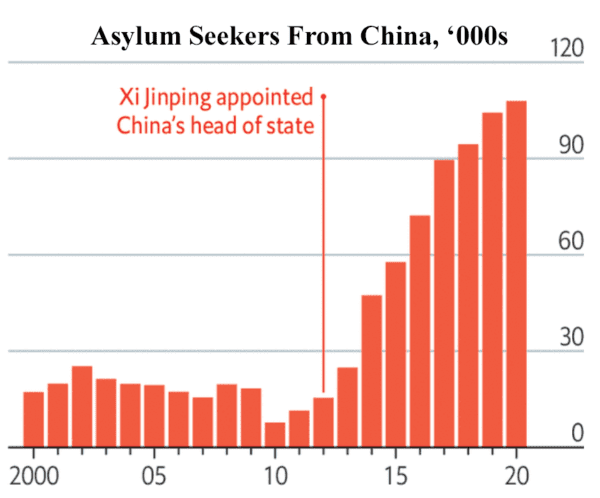
Since 2010, we have granted asylum to more than 275,000 people. This table is just for one year, 2019, but China is at the top spot, followed by Venezuela, El Salvador, Guatemala, and Egypt.

For the last 10 years, Chinese have accounted for fully one quarter of asylees. They usually come on a tourist visa and then say they need asylum. These are not Uighurs who are sure-enough persecuted and might have a claim. They are ordinary Chinese who want to live in the West and have suckered us into giving them asylum.
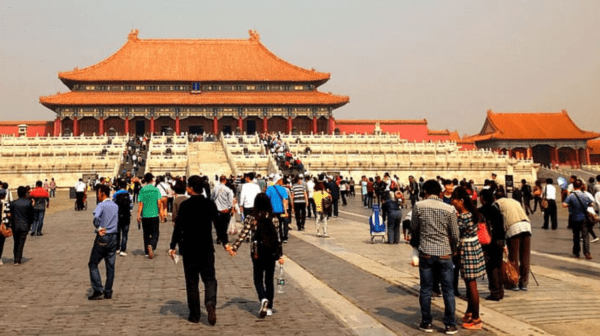
In the next few years, they should be nudged out of first place by worthy Afghans.
But don’t forget refugees – the ones who applied from outside the country. We have let in more than 600,000 of them in the last 10 years, as you can see on this table, and the top countries are Myanmar – that’s the hip new name for Burma – Iraq, Bhutan, Congo, and Somalia.
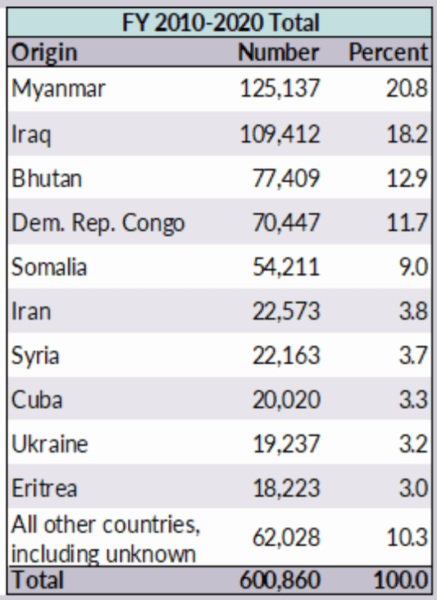
I’m told these people make wonderful neighbors. This graph shows how much the number of refugees bounces around from year to year.
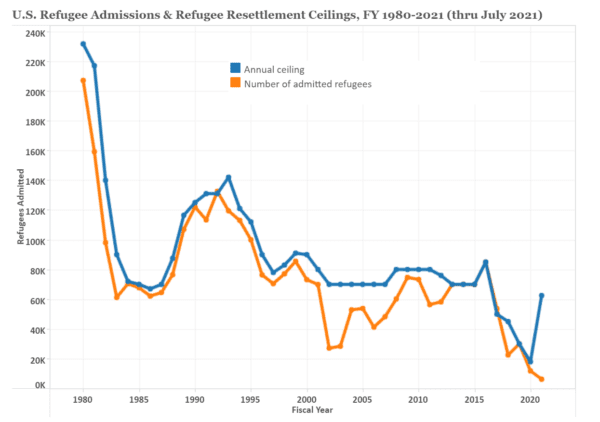
Over at the right, you can see that Donald Trump cut refugee admissions way back. But as you can also see, in 2020, Joe Biden raised the refugee ceiling and promises to double it again.
The point is this: whether they are refugees, asylum seekers, border hoppers, or legal immigrants, who says we need more Burmese, Congolese, Chinese, Bhutanese, Salvadorans, and Afghans?
To return to the New York Times article about Fort McCoy, it ends with a quote from an Afghan, who points to Afghan children running around the base. “These children are the future of the United States,” he says. Right. Along with Burmese and Congolese.
Remember: Whites are expected to be a minority by 2040. Despite our professed love of diversity, when the neighborhood turns Haitian or Guatemalan, whites move away. I guess we’ll just have to keep on moving. So who are the refugees? Us or the newcomers?















